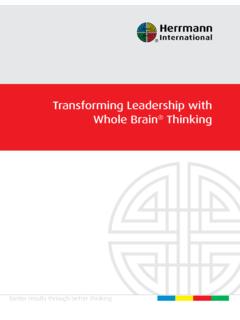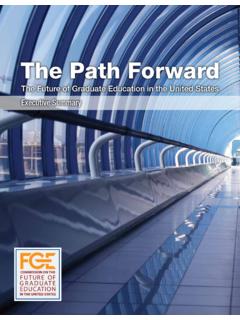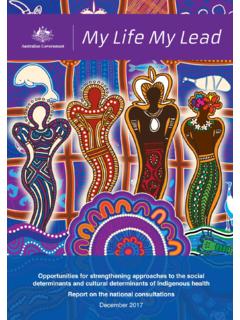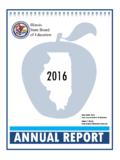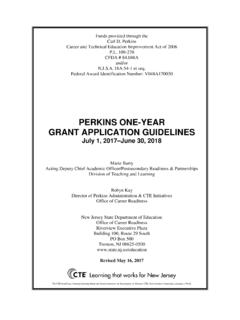Transcription of PROMOTING October, 2014 COMMUNITY VITALITY …
1 Page 1the issue at hand is to find a framework that captures the multi-dimensional nature of COMMUNITY of the challenges that local leaders and citizens constantly face is finding a coherent way to address the variety of challenges facing their communities be they urban, suburban, or rural in nature. In many respects, the intent of most COMMUNITY and economic development initiatives is to advance an area s quality of life. But what does quality of life mean and how is it measured? Is it the presence of a strong local economy, sound local leadership, quality government services, top-notch public supported schools, great health care services, or other indicators? The simple answer is yes. In many respects, all of these represent traits that would be associated with a COMMUNITY deemed to have a high quality of life. As such, the issue at hand is to find a framework that captures the multi-dimensional nature of COMMUNITY life. Most importantly, it has to be one that has been vetted in peer-reviewed scholarly journals and, as result of this process, found to be both scientifically and conceptually sound.
2 Moreover, the framework had to be one that could guide the on the ground efforts of COMMUNITY and economic development these important pre-conditions in mind, the perspective that one may find appealing is the COMMUNITY Capitals Framework (CCF), a perspective developed and fine-tuned over a span of several years by Cornelia Butler Flora and Jan L. Flora from Iowa State University (2008). The Floras suggest that the lifeblood of any COMMUNITY can be linked to the presence and strength of seven COMMUNITY capitals, resources that can be invested or tapped for the purpose of PROMOTING the long-term well-being of communities (Jacobs, 2011a). The seven COMMUNITY capitals are natural, cultural, human, social, political, financial, and built. Strong and resilient communities strive for balanced investments in these seven capitals. If communities place too much emphasis on one or two of the capitals, they can end up suppressing the growth of the other COMMUNITY capitals, a condition that can damage the overall health of the COMMUNITY .
3 For example, places that invest aggressively in built capital (through the pursuit of bricks and mortar type of facilities) may contribute to the decline of the COMMUNITY s natural and cultural capitals, especially if such facilities are constructed in pristine areas or on lands that are part of the rich history of that locality. PROMOTING COMMUNITY VITALITY & SUSTAINABILITYThe COMMUNITY Capitals FrameworkINTRODUCTION Lionel J. Bo Beaulieu, Purdue UniversityOctober, 2014 Page 2 Natural capital refers to the landscape, air, water, soil, and biodiversity of both plants and animals (Flora and Flora, 2008) in other words, our environment. It is also referred to in the literature as natural amenities (McGranahan, 1999) assets that are linked to a particular place, such as weather, geographic location, natural resources, and natural beauty (Emery and Flora 2006). Since people and the communities of which they are a part are embedded in the environment, one could argue that natural capital undergirds several of the other capitals.
4 A healthy and functioning environment provides valuable ecosystem services, such as food, timber, wildlife habitat, flood control, and recreational opportunities, which are essential for human life. Moreover, people and their communities are unable to thrive in areas where natural capital is neglected and depleted. AN OVERVIEW OF THE SEVEN COMMUNITY CAPITALSWe offer the following as a more extensive descripton of each of the seven capitalsNATURAL CAPITALThe concept of culture provides a frame of reference for understanding the fabric of COMMUNITY life. This fabric is often connected by a common language, symbols, gestures, beliefs, values, and resources. In a classic textbook definition, culture consists of the material and nonmaterial aspects of a way of life, which are shared and transmitted among members of a society (Rogers et al., 1988). Culture is viewed as a tool kit of symbols, stories, rituals, even the world-view that shapes individuals (Swidler,1986) It includes the values and symbols reflected in clothing, music, industry, art, language, and customs.
5 It also encompasses events, materials (paintings, books), festivals, museums, and other activities occurring in communities (Flora and Flora, 2008).CULTURAL CAPITALIn its simplest form, human capital reflects the investments that people make in their education, on-the-job training, or health. Such activities translate into improved knowledge, skills, and health status for individuals factors that increase their human capital stock. As stocks improve, productivity levels increase, resulting in higher earnings for these workers. Human capital also refers to efforts by individuals to enhance their interpersonal and leadership skills in hopes of strengthening their ability to become active contributing members to the civic health of their communities (Flora and Flora, 2008).The benefits of human capital investments are not accrued solely to individuals. Communities with good shares of educated, healthy, and skilled workers also benefit, especially in their capacity to remain resilient during periods of economic uncertainty.
6 Places with a good base of creative/knowledge-based workers, for example, tend to experience economic growth or stability. Why is that the case? Simply put, creative/knowledge-based workers serve as engines of innovation and entrepreneurial activities, actions that help create a good number of high paying jobs in communities and regions (Henderson and Abraham, 2005; Metcalfe and Ramlogan, 2005; Munnich and Schrock, 2003). Similarly, the expanding interest in STEM-related occupations (those associated with science, technology, engineering and mathematics) is due, in no small measure, to the fact that STEM-related jobs have outpaced non-STEM jobs by a factor of 3 to 1 in the over the span of the last decade (Langdon et al., 2011). But, communities that want to gain ground in terms of expanding their creative/knowledge or STEM-related sectors will be unable do to so without the presence of a sizable pool of workers with strong human capital CAPITALPage 3 Social capital represents the glue that holds a COMMUNITY together and whose presence can spur the type of economic growth that brings benefits to the entire COMMUNITY .
7 In communities where good things are happening across the spectrum in education, in job creation, in health care, in COMMUNITY services a broad-based corps of civic-minded people and organizations is often in place to undergird these important activities. Social capital consists of bonding and bridging activities that occur within the local COMMUNITY setting, as well as linkages that tie COMMUNITY members to organizations and resources located outside the COMMUNITY (what is sometimes referred to as vertical connections). Bonding represents the strong interactions and ties that people have with family, friends, neighbors, and close work associates. Bridging reflects the linkages that individuals have with people and groups within the COMMUNITY with whom they have only limited interactions or with individuals and organizations outside of the locality. These types of relationships are what Granovetter (1973) labels as weak ties that can be accessed in times of need.
8 The third element, vertical linkages, offers an avenue for local people, organizations and communities to gain access to valuable resources and ideas from outside the COMMUNITY that can be used to support and guide local initiatives. According to Woolcock (2001), the presence of various combinations of bonding, bridging, and linking social capital can have positive impacts on the range of social and economic outcomes that are possible in communities. AN OVERVIEW OF THE SEVEN COMMUNITY CAPITALSWe offer the following as a more extensive descripton of each of the seven capitalsSOCIAL CAPITALT here are several dimensions associated with the concept of political capital. The first relates to individuals who are in positions of power and influence in the COMMUNITY . As Flora and Flora (2008:145) note, it is the ability to affect the distribution of both public and private resources within the COMMUNITY . A second dimension has to do with the ability to gain access to individuals and organizations the so-called power brokers or movers and shakers -- with the resources to influence important decisions (Flora et al.)
9 , 2004). A third aspect of political capital refers to efforts that are made to develop new leadership in the COMMUNITY , and/or expand the engagement of citizens in discussions of important COMMUNITY matters through the use of various strategies, such as deliberation forums. By focusing on these various aspects of political capital, we can gain a better understanding of what people and groups are calling the shots in a COMMUNITY , and what groups are having little influence or role in shaping local decisions (Flora and Flora, 2008).How can you determine the nature of political capital in your COMMUNITY ? A good bit of it requires careful monitoring of how and by whom decisions are made in a COMMUNITY . For example, drawing upon a rich literature on COMMUNITY power, we know that when key decisions are made by only a handful of people, you tend to have an elite leadership structure in place in the COMMUNITY . On the other hand, if decisions tend to be dispersed across a variety of people and groups, depending on the issue being discussed or debated, then you may have the presence of a more pluralistic leadership structure (Aiken and Mott, 1970).
10 Other hints of whether influence is shared or held tightly by a small group of elites is when you see (or fail to see) the launching of local leadership development programs, COMMUNITY /town-hall meetings, or public deliberation sessions, features of a COMMUNITY that suggest that local leaders are open to the involvement of a larger group of people weighing in, and actively taking part, in tackling important local issues. POLITICAL CAPITALPage 4IS THERE A SUBSET OF COMMUNITY CAPITALS THAT SHOULD BE GIVEN PRIORITY ATTENTION OVER THE OTHER CAPITALS? Financial capital represents resources needed to fund the provision, construction, and implementation of a variety of programs, projects, and assets that advance the COMMUNITY s economic, social, and infrastructure development. A stable and vibrant COMMUNITY life depends on the availability of reliable financial capital institutions. These include COMMUNITY development banks, credit unions, loan funds, venture capital funds, and microenterprise loan funds.


